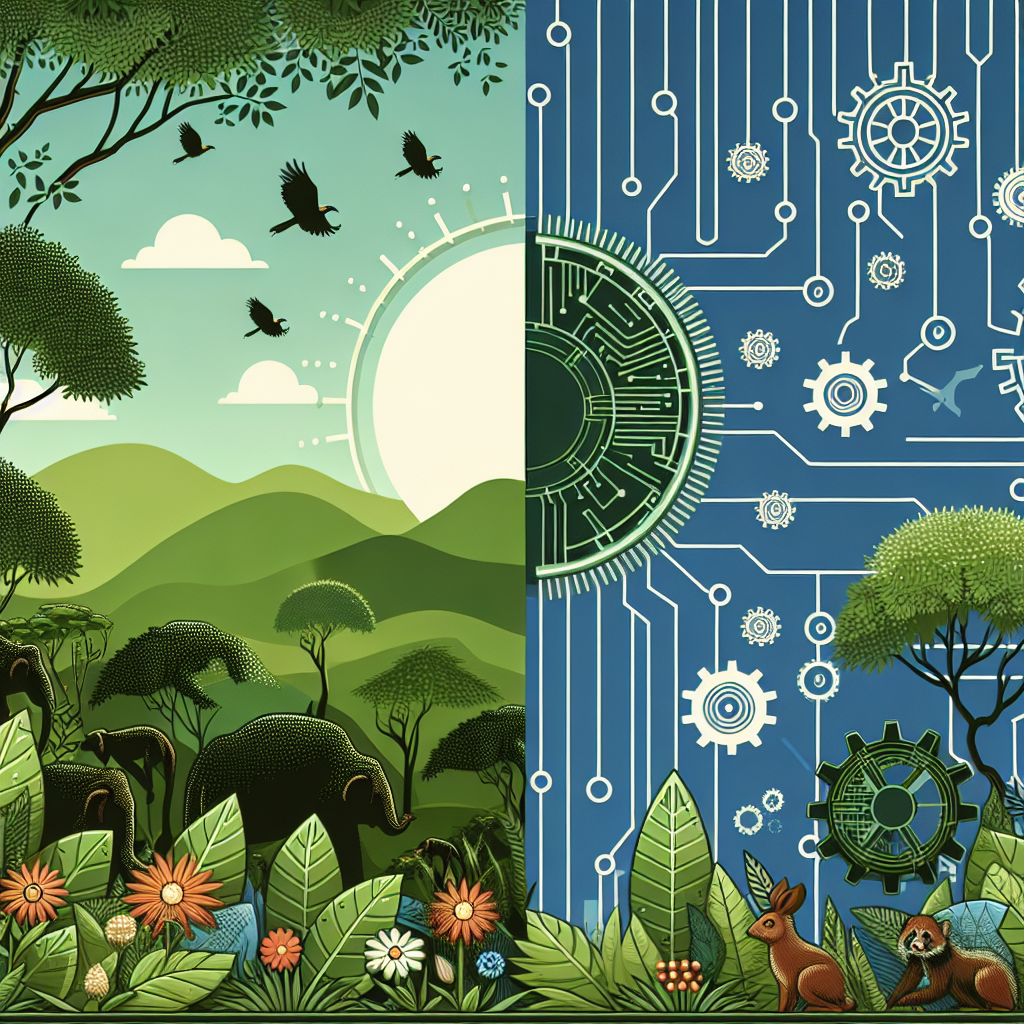Artificial Intelligence (AI) has been a game-changer in many industries, including environmental conservation. AI technology has the potential to revolutionize the way we approach habitat preservation and wildlife protection. However, as with any new technology, there are risks associated with the use of AI in environmental conservation. In this article, we will explore the potential risks of AI in environmental conservation, specifically focusing on impacts on habitat preservation.
AI in Environmental Conservation
AI has the ability to process vast amounts of data and analyze complex patterns in a fraction of the time it would take a human. This makes it an invaluable tool in environmental conservation efforts, where large amounts of data need to be collected and analyzed to make informed decisions about habitat preservation. AI can help conservationists track and monitor wildlife populations, predict and prevent illegal activities such as poaching, and even identify new areas for habitat restoration.
One of the key ways AI is being used in environmental conservation is through the development of predictive models. These models can analyze historical data on habitat loss, climate change, and other factors to predict how habitats may change in the future. This information can help conservationists make informed decisions about where to focus their efforts and resources to protect vulnerable habitats.
Another way AI is being used in environmental conservation is through the development of autonomous drones and robots. These devices can be used to monitor wildlife populations, collect data on habitat conditions, and even deter poachers. By using AI-powered drones and robots, conservationists can gather more accurate and timely data on habitat preservation efforts, leading to more effective conservation strategies.
Risks of AI in Environmental Conservation
While AI has the potential to greatly benefit environmental conservation efforts, there are also risks associated with its use. One of the main risks is the potential for AI to make errors in data analysis. AI algorithms are only as good as the data they are trained on, and if the data is incomplete or biased, the AI may make incorrect predictions about habitat conditions or wildlife populations. This could lead to misguided conservation efforts that do more harm than good.
Another risk of AI in environmental conservation is the potential for technological failure. AI-powered drones and robots are complex machines that rely on a network of sensors, cameras, and algorithms to function properly. If any part of this system fails, it could lead to inaccurate data collection or monitoring, putting wildlife populations at risk. Additionally, the use of AI in conservation efforts raises questions about data privacy and security. If sensitive data on wildlife populations or habitat conditions is collected and stored by AI systems, there is the potential for this information to be misused or exploited by malicious actors.
Impacts on Habitat Preservation
Despite the risks associated with AI in environmental conservation, the potential impacts on habitat preservation are significant. AI technology can help conservationists monitor and protect habitats more effectively, leading to better outcomes for wildlife populations and ecosystems. By using AI to analyze data on habitat loss, climate change, and other factors, conservationists can make more informed decisions about where to focus their efforts and resources. This can lead to more targeted conservation strategies that have a greater impact on preserving habitats for future generations.
In addition, AI-powered drones and robots can help conservationists monitor wildlife populations more accurately and efficiently. By using drones to survey remote areas or robots to track animal movements, conservationists can gather data that was previously inaccessible. This can lead to a better understanding of wildlife populations and their habitats, helping conservationists make more effective decisions about how to protect them.
FAQs
Q: How can AI help in habitat restoration efforts?
A: AI technology can help conservationists identify areas that are in need of habitat restoration by analyzing data on habitat loss, climate change, and other factors. By using AI to predict how habitats may change in the future, conservationists can prioritize areas for restoration efforts and develop more effective strategies for restoring habitats.
Q: What are some examples of AI-powered drones and robots being used in environmental conservation?
A: AI-powered drones and robots are being used in a variety of ways in environmental conservation. For example, drones are being used to monitor wildlife populations, collect data on habitat conditions, and even deter poachers. Robots are also being used to track animal movements, survey remote areas, and perform tasks that are too dangerous for humans.
Q: What are some of the challenges associated with using AI in environmental conservation?
A: Some of the challenges associated with using AI in environmental conservation include the potential for errors in data analysis, technological failure, and concerns about data privacy and security. It is important for conservationists to carefully consider these risks and take steps to mitigate them when using AI technology in conservation efforts.
In conclusion, while there are risks associated with the use of AI in environmental conservation, the potential benefits are significant. By harnessing the power of AI technology, conservationists can monitor and protect habitats more effectively, leading to better outcomes for wildlife populations and ecosystems. It is important for conservationists to carefully consider the risks and challenges associated with AI in environmental conservation and take steps to mitigate them in order to ensure the long-term success of conservation efforts.

